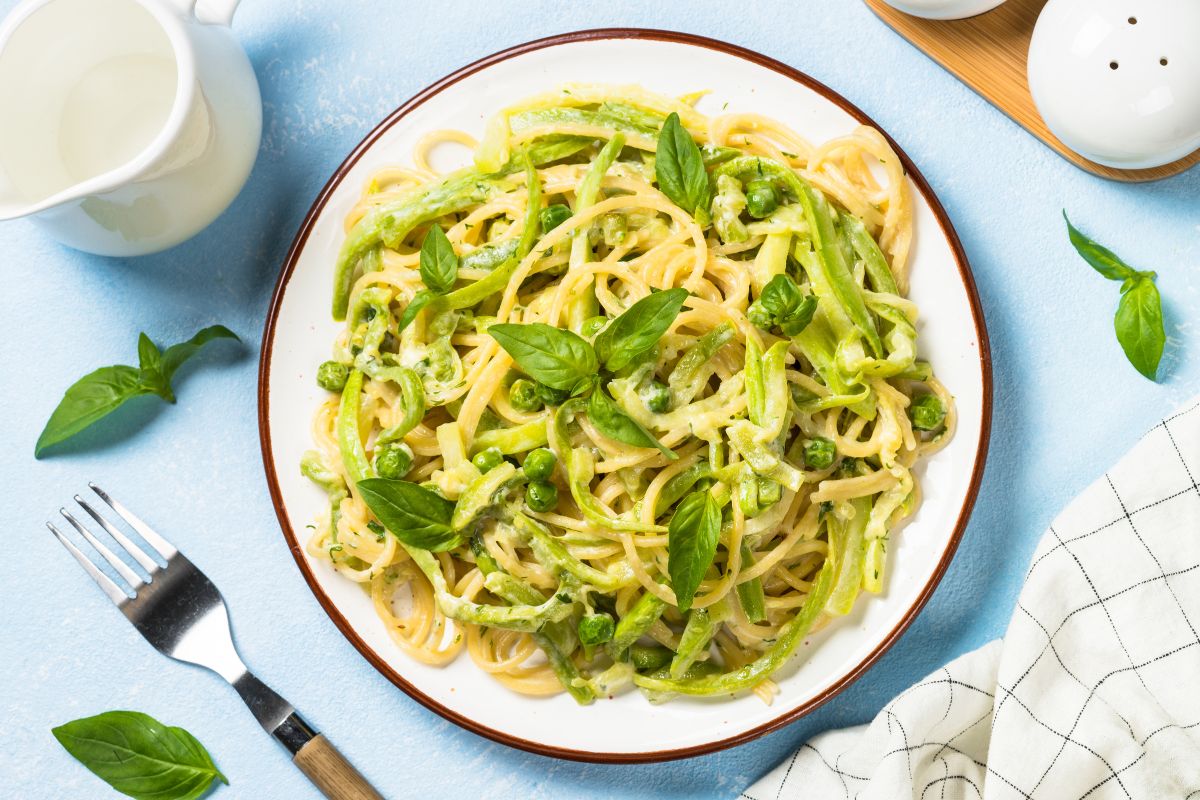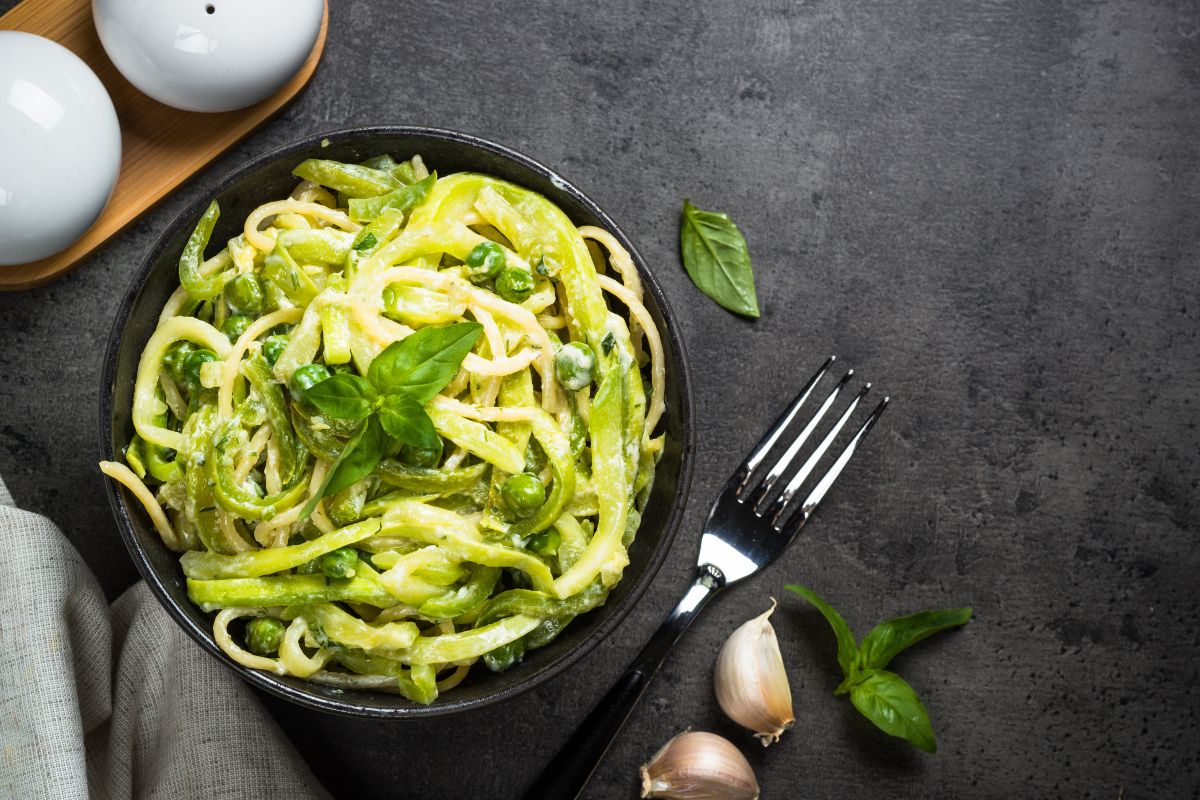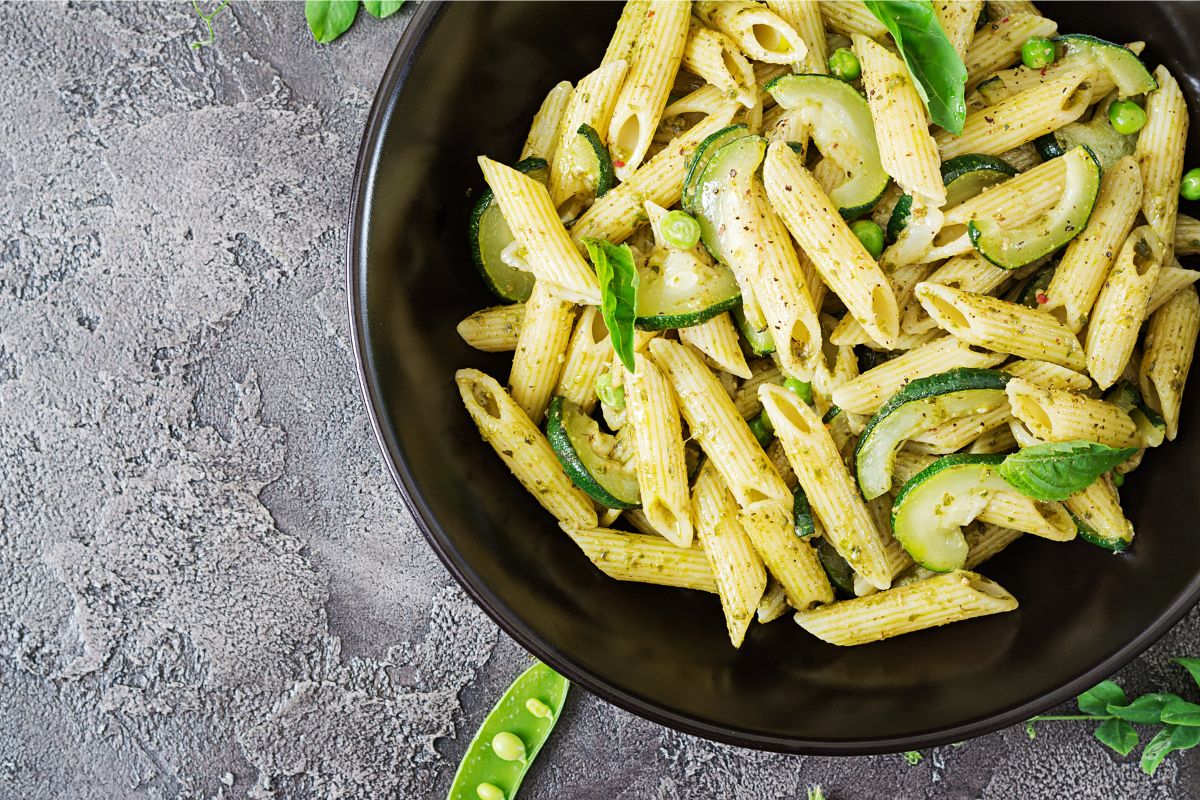Who is Stanley Tucci?
Stanley Tucci, of the famous Stanley Tucci Zucchini pasta recipe, was born in New York in 1960. He is a director of five films and appears in over seventy, including The Devil Wears Prada, Easy A, The Terminal, Road to Perdition, and more than a dozen off-Broadway plays.
He co-starred in Julie & Julia and The Lovely Bones, for which he received his first Academy Award nomination for Best Supporting Actor.

The Searching for Italy TV Show
Stanley Tucci: Searching for Italy is an American travel and food show that debuted on CNN on February 14, 2021. The series follows Oscar nominee Stanley Tucci as he travels around Italy, visiting each region and learning about their cultures, cuisine, and history.
The series was in two nominations; Primetime Emmy Awards, including Outstanding Hosted Nonfiction Series. The show helps to fill the void left by Anthony Bourdain’s untimely death, as Parts Unknown ended with the star’s suicide in 2018.
The show is sure to cause severe food envy. According to the Wall Street Journal, viewers will watch beautiful videos of the country’s tantalizing fare like Stanley Tucci pasta with zucchini, the four kinds of pasta of Rome (Cacio e Pepe, Gricia, Carbonara, and Amatriciana); Amalfi Coast lemons in dishes like Delizie al Limone dessert; and Milan veal chops and Riso.
Tucci zigzags through Italy, tasting and preparing the specialties of each region (Naples and the Amalfi Coast, Rome, Bologna, Milan, Tuscany, and Sicily). He told the Hollywood Reporter that his mission was to show the breadth and depth of Italian cuisine, going beyond spaghetti and meatballs.
Tucci meets cooks, academics, artisan food producers, and others who provide a glimpse into the region’s culture in each episode. He told the news outlet that seeing how “real” Italians cook completely changes your life and kitchen.
According to Variety, Stanley Tucci’s searching for Italy’s journey off the beaten path reveals authentic moments such as investigating Rome’s four signature pastas and the inventive ways Italians use organ meats.
The show delves into history in segments such as a profile of a Jewish chef who fled to Rome as a child to avoid the Nazis. Her artichoke hearts (Tucci says they’re the best) pay homage to the city’s Jewish immigrants.
In the Naples episode, you can see this mash-up, where Tucci investigates “two of Italy’s favorite subjects: food and death.” The episode examines Mount Vesuvius’ long-lasting impact on the Southern City and the enduring role cholera plays on the city’s food traditions (via the Wall Street Journal).

What is Nerano Pasta?
Spaghetti alla Nerano is a pasta dish with fried courgettes and cheese from Campania in southern Italy. The dish’s origins trace back to a single woman and a single Campanian village.
That woman is Maria Grazia, who invented the pasta nerano dish in 1952 at her name-brand restaurant, Mariagrazia. The restaurant (and the recipe) trickle down the generations in the picturesque fishing village of Nerano on the Amalfi coast, and both are still going strong today.
The dish is an example of how to make simple ingredients sing; the original recipe calls for pasta, courgettes, Provolone del Monaco cheese, and basil.
Provolone del Monaco is a buttery, slightly spicy cow’s milk cheese from the Sorrento region, but it’s much more difficult to find in the UK than regular Provolone. If you can’t find either, a combination of Pecorino and Parmigiano Reggiano will suffice.
Stanley Tucci Spaghetti alla Nerano Recipe
Time: 8 hrs 55 mins
Additional: 8 hrs
Serving Size: 2 servings
Prep Time: 20 minutes
Cook Time: 35 minutes
Nutritional Facts/Info per serving/in total
Calories: 1016
Protein: 23.3 grams (0.82 ounce )
Carbohydrates: 62.5 grams (2.20 ounces )
Fat: 78.1 grams (2.75 ounces)
Cholesterol: 56.5 mg (0.056 gram)
Sodium: 479.3 mg (0.479 gram)
Equipment Needed
- Knives
- Large saucepan
- Tongs
- Spoon
- Spatula
Ingredients
- 4 cups sunflower oil, or as needed
- 1 pinch of salt
- 4 ounces (113.4 grams) of spaghetti
- 6 medium green zucchini
- 2 tablespoons of olive oil
- 2 Basil leaves, torn into small pieces
- 5 tablespoons of grated Pecorino Romano cheese
- 2 tablespoons of unsalted butter
- 3 tablespoons grated Parmigiano-Reggiano cheese
Directions
- Heat the sunflower oil in deep frying to 350 degrees Fahrenheit. (175 degrees Celsius). 1/8-inch (0.31 centimeters) circular zucchini slices
- Deep-fry some zucchini in the hot oil for 4 to 5 minutes, or until lightly browned. Repeat with the remaining zucchini, transferring to a single layer on paper towels to drain. Allow the zucchini to cool to room temperature.
- Place the cooled zucchini in a bowl. Refrigerate for 8 hours or overnight.
- Warm up a large saucepan of lightly salted water. Cook the spaghetti in boiling water, stirring periodically, for 9 to 10 minutes, or until it cooks well but firm to the bite.
- On medium heat, heat the olive oil as you cook the spaghetti in a skillet. Cook, stirring periodically, until the zucchini begins to release juices, soften, and break down, 3 to 5 minutes.
- Add some drops of the pasta water to the zucchini, but not too much. Cut the zucchini into small pieces using the edge of a spoon or spatula. Reduce to low heat and mix in the basil and butter until the butter melts.
- Using tongs, transfer the spaghetti to the sauce and mix until well-coated. Incorporate the Pecorino Romano and Parmigiano-Reggiano cheeses. Adjust the seasoning with a final splash of pasta water if necessary.
- Garnish with additional grated cheese and fresh basil.
Our Top Spaghetti alla Nerano Tips
- While preparing Stanley Tucci zucchini pasta, avoid crowding the zucchini. Cooking the zucchini in batches allows it to brown and soften more quickly. However, if you don’t have enough time, fry them all at once, and it will still work out.
- Use two different types of cheese. The best flavor for this pasta dish comes from combining two kinds of cheese. Pecorino and Caciocavallo are preferable cheeses, but Reggiano and Pecorino, or Reggiano and hard Provolone, will also work well.
- Continue to mix the pasta until the cheese melts. Caciocavallo tends to clump up a little. Begin tossing vigorously as soon as it hits the pan. Don’t give up; add a little more pasta water and toss it again if it clumps.
- Make use of a large skillet. Tossing should occur in a skillet at least 12 inches (30.48 centimeters) wide. If you don’t have a large mixing bowl, toss everything together in a bowl. Make sure your pasta water is very hot when you add it, so the cheese melts.
- Toss the pasta and cheese together over low heat. Ensure the heat is very low when tossing the spaghetti in the pan. Otherwise, the cheese will clump, and the pasta will get mushy.
- Pasta alla Nerano is best when you serve it right away while still warm and creamy. Leftovers can refrigerate for up to three days and reheat gently on the stovetop. But the best way to use up the leftovers is to make a spaghetti frittata.

In Conclusion
You’ll be familiar with the dish’s origins and story if you’ve seen Stanley Tucci’s Searching For Italy. One of the show’s most popular episodes features Stanley Tucci enjoying spaghetti with zucchini, which frantically triggers searching the internet for ways to replicate it.
Chef Maria Grazia, who created the nerano pasta dish for her restaurant in the 1950s, kept the recipe very secret and is still today. Her restaurant is still open in Nerano, Italy, a Sorrento village where they still serve and enjoy pasta.
The origin of fried zucchini pasta is not disputed, but the exact ingredients and preparation method are. This is not surprising, given that the original recipe is still a closely guarded secret. Most recipes involve frying thinly sliced zucchini in garlic oil before adding it to spaghetti with grated cheese, a little butter, salt, basil, and pepper.
The distinctions are whether you blend some of the zucchini before adding to the spaghetti and which cheese or cheeses you use.

Community of passionate writers and content creators who share a love for Italian heritage, culture, travel, food, and the Italian-American community. Our mission is to celebrate Italy’s rich history and traditions and connect with others who share the same passion.

